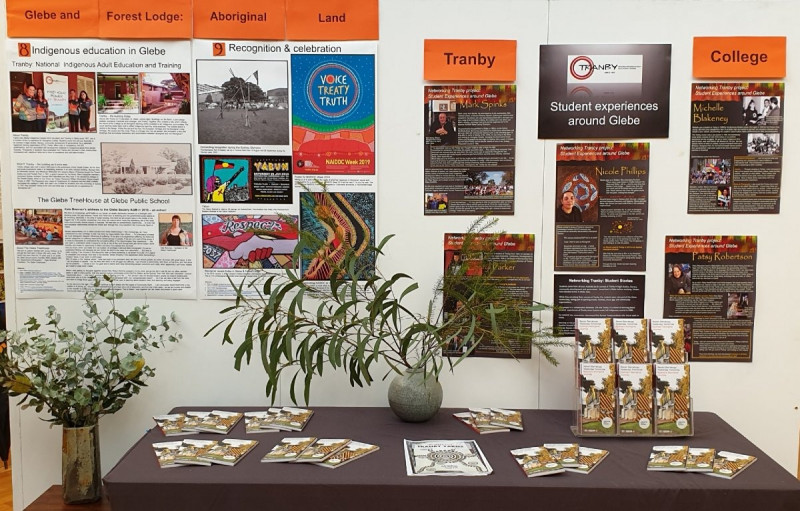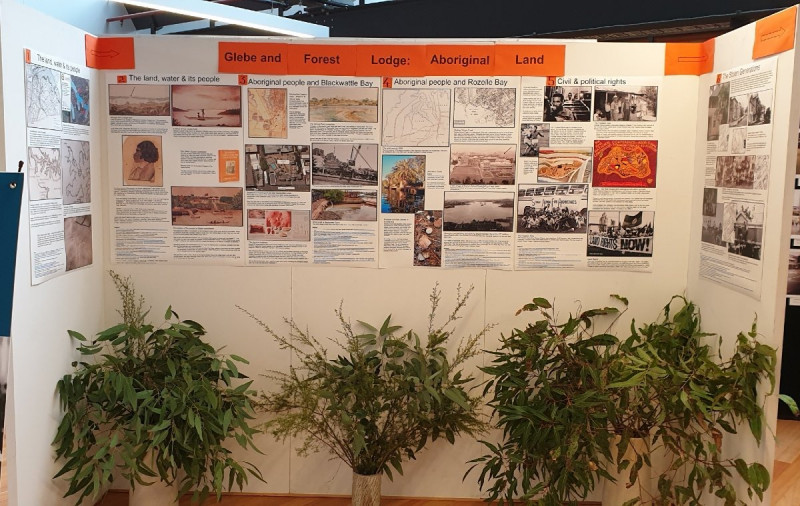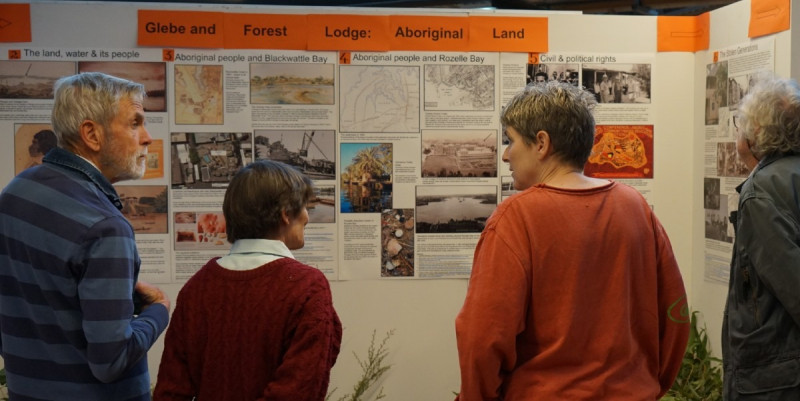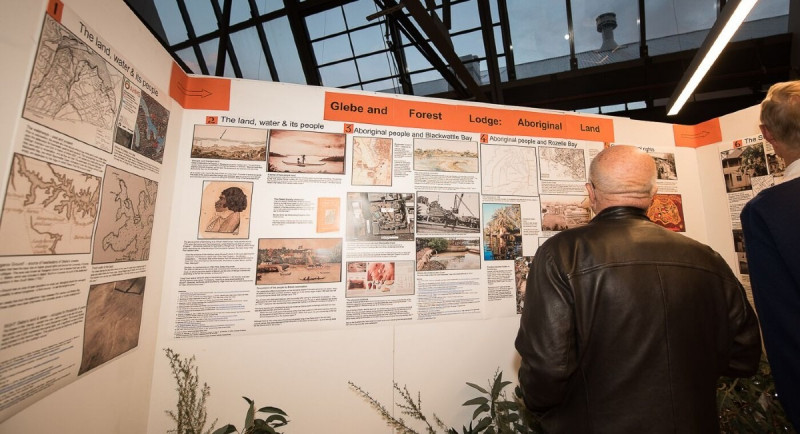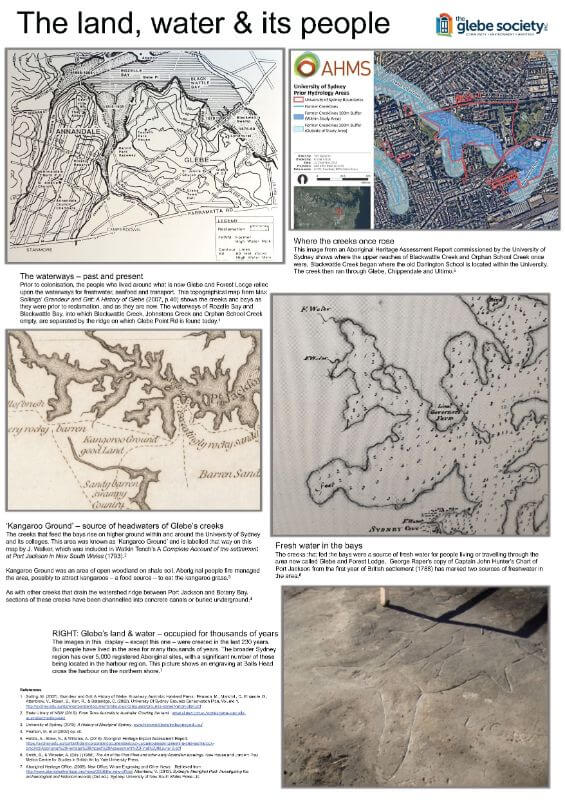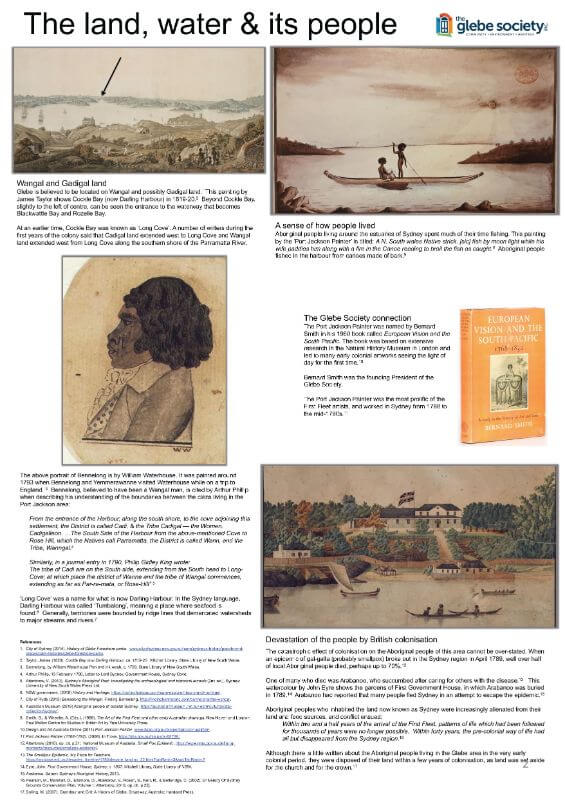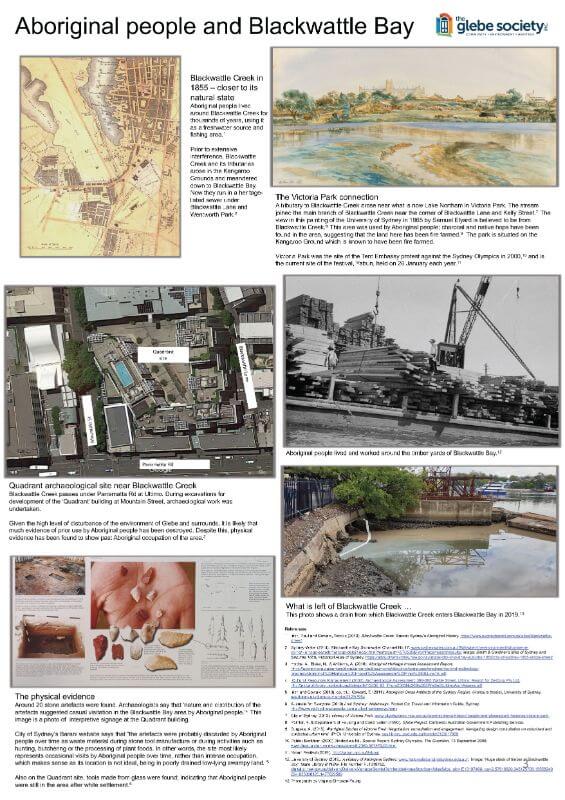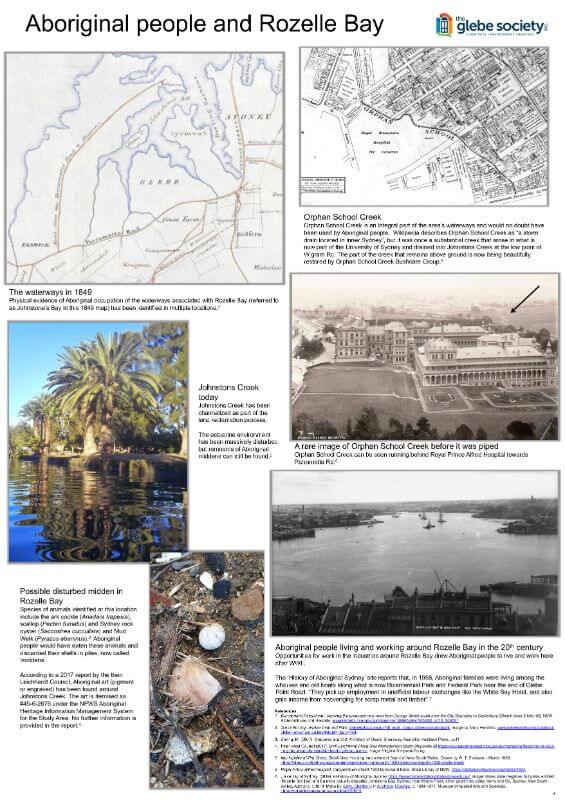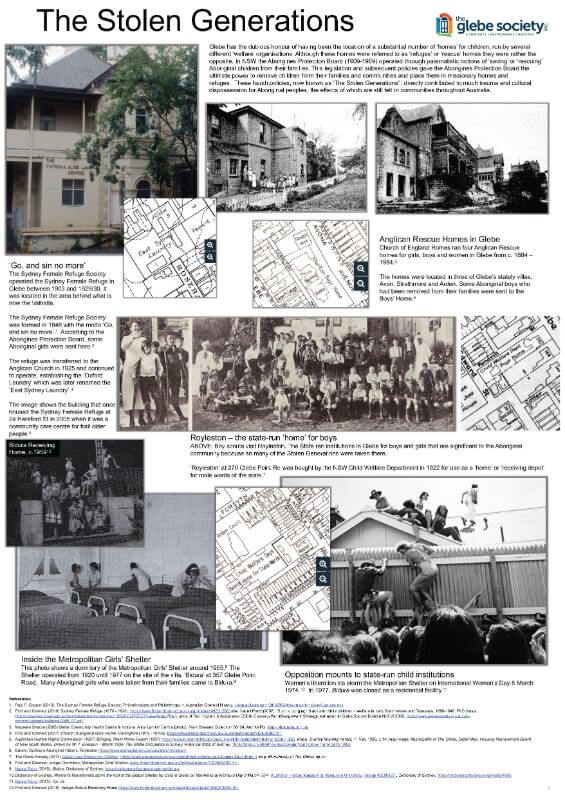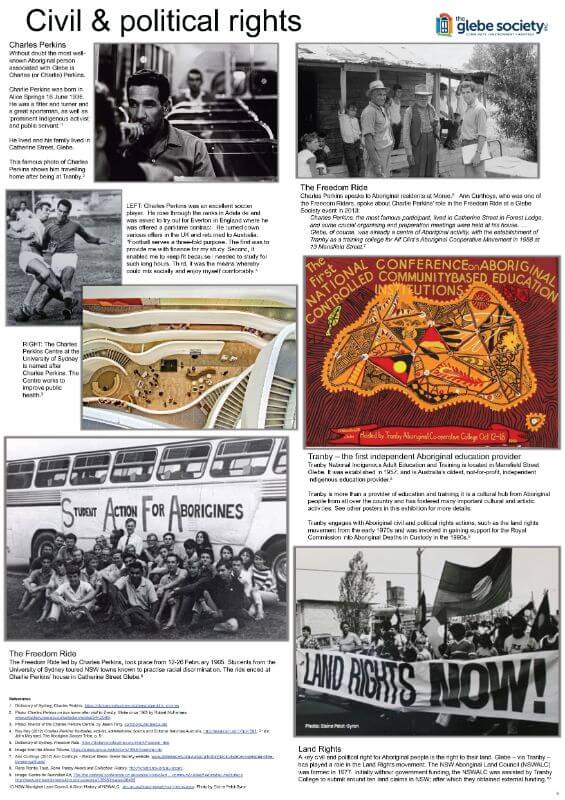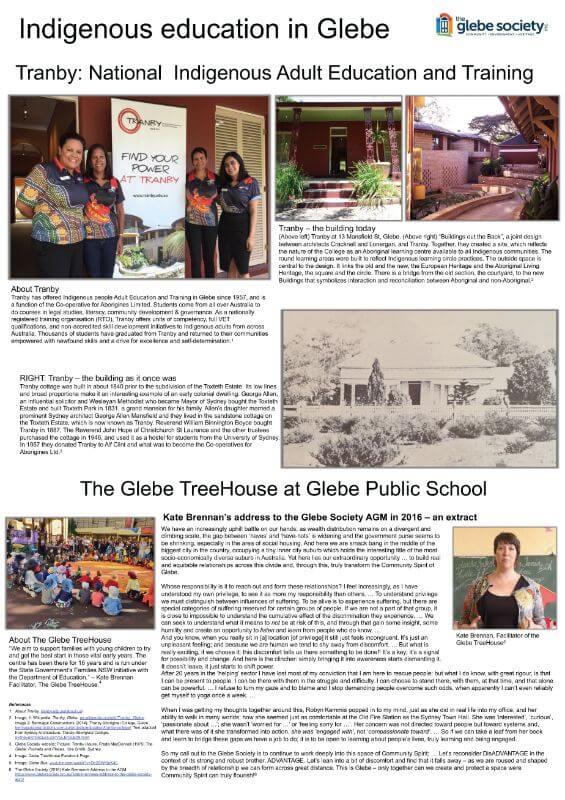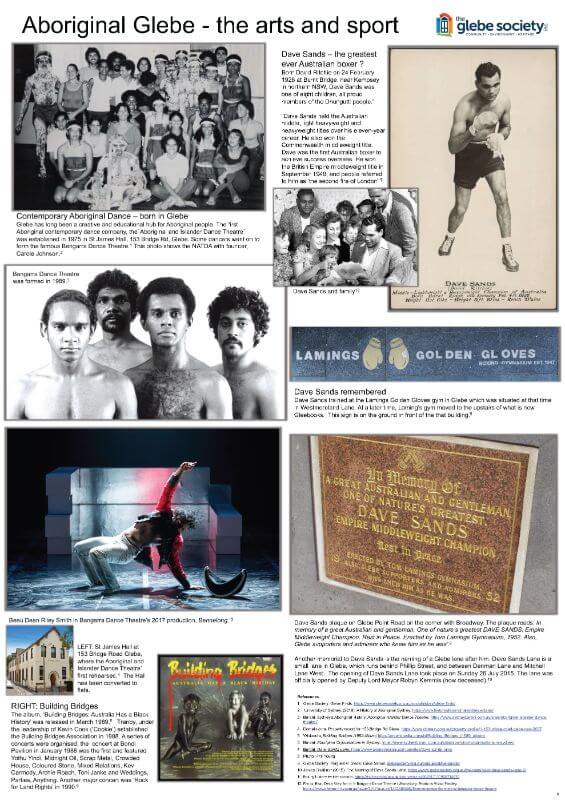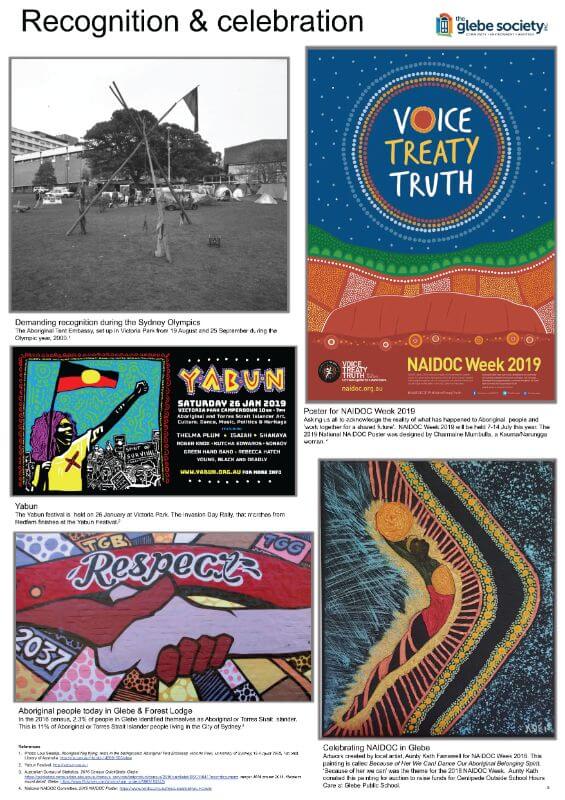The display, ‘Aboriginal Land: Glebe & Forest Lodge’, created by Virginia Simpson-Young, focussed on the history of Glebe and Forest Lodge as it relates to the Aboriginal people who lived here before the arrival of the British, as well as in the past 230 years and today.
Archaeological excavations in Ultimo – where Blackwattle Creek once ran – uncovered around 20 stone artefacts, tangible evidence of past Aboriginal occupation of the area.
Although many local Aboriginal people – up to 70 percent – died of diseases brought in by British people on the first fleet, Glebe has always played an important role in Aboriginal history and culture. Many settled in Glebe when moving to Sydney for work, some finding jobs at the timber yards and other industries in the working harbour.
Glebe is also associated with the Aboriginal rights movement, including Charles Perkins and the Freedom Rides. Tranby Aboriginal College in Mansfield St was – and still is – a cultural, artistic, educational and political hub.
Unfortunately, Glebe has a place in the history of dispossession through the Stolen Generations – as many children found themselves in Glebe ‘homes’ such as the Anglican Rescue Homes (in the mansions, Strathmore, Arden and Avona, and the government institutions at Bidura and Royleston.
Aboriginal organisations calling Glebe home today include Glebe NAIDOC, and Glebe Treehouse at Glebe Public School.
Thank you to Tranby College for providing support, information and display materials and also to historian, Professor Heather Goodall, for advice and checking the content.
Posters
Click on the images below to view a pdf of each poster.
Photos of the Event
